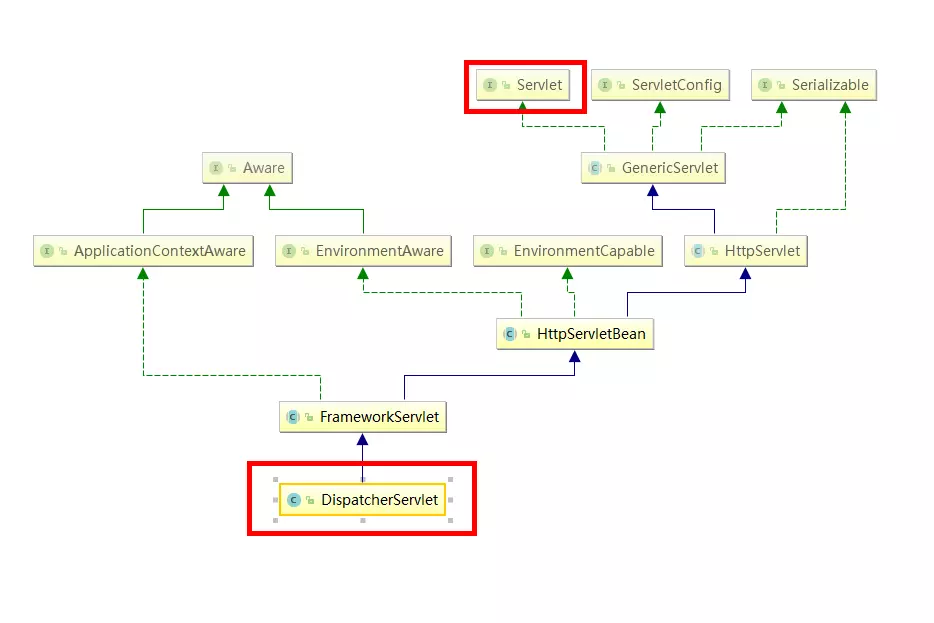
问题
问题描述:项目中发现,自定义切面注解在Controller层正常工作,在Service层却无法正常工作。为了便于分析,去掉代码中的业务逻辑,只留下场景。
自定义注解,打印时间
/**
* Description: 自定义打印时间的注解
*/
@Retention(RetentionPolicy.RUNTIME)
@Target({ElementType.METHOD})
@Documented
public @interface PrintTime {
}
注解解析器
/**
*Description:打印时间注解的解析器
*/
@Aspect
public class PrintTimeProcessor {
private Logger LOGGER = LoggerFactory.getLogger(getClass());
@Pointcut("@annotation(com.foo.service.annotation.PrintTime)")
public void printTimePoint() {
}
@Around("printTimePoint()")
public Object process(ProceedingJoinPoint jp) throws Throwable{
System.out.println();
LOGGER.error("开始运行程序。。。Start==>");
Object proceed = jp.proceed();
LOGGER.error("结束啦,运行结束==>");
System.out.println();
return proceed;
}
}
Controller层
@RestController
@RequestMapping(value = "/user")
public class UserController {
private Logger logger = LoggerFactory.getLogger(getClass());
@Resource
private UserService userService;
@RequestMapping(value = "/serviceAspect", method={RequestMethod.GET})
public String serviceAspect(){
return userService.serviceAspect();
}
@RequestMapping(value = "/controllerAspect", method={RequestMethod.GET})
@PrintTime
public String name(){
logger.info("Controller层----测试切面");
return "controllerAspect";
}
}
Service层
@Service
public class UserService {
private Logger logger = LoggerFactory.getLogger(getClass())
@PrintTime
public String serviceAspect(){
logger.info("Service层---测试切面");
return "serviceAspect";
}
}
spring.xml配置文件,主要部分
<context:annotation-config />
<!-- 动态代理开启 -->
<aop:aspectj-autoproxy proxy-target-class="true" />
<context:component-scan base-package="com.foo" >
<context:exclude-filter type="annotation" expression="org.springframework.stereotype.Controller"/>
</context:component-scan>
<!-- 公共配置引入 -->
<import resource="classpath:spring/spring-config-dao.xml" />
springmvc.xml配置文件,主要部分
<mvc:annotation-driven />
<mvc:default-servlet-handler />
<!-- 动态代理开启 -->
<aop:aspectj-autoproxy proxy-target-class="true" />
<!-- mvc controller -->
<context:component-scan base-package="com.foo.web.controller" use-default-filters="false">
<context:include-filter type="annotation" expression="org.springframework.stereotype.Controller"/>
<context:exclude-filter type="annotation" expression="org.springframework.stereotype.Service" />
</context:component-scan>
<bean class="com.foo.service.processor.PrintTimeProcessor"/>
以上为主要代码,项目运行之后,发现在Service层的注解切面未生效,而在Controller层正常。而当我将springmvc.xml中的
<bean class="com.foo.service.processor.PrintTimeProcessor"/>
迁移至spring.xml中,发现Service层与Controller层的注解切面均可正常运行。WHY???
从源码的角度探究该问题
由于源码中的个方法较长,所以只贴出重点且与主题相关的代码。建议结合本地源码一起看。
为了说清楚这个问题,咱们先看一下Spring容器是如何实现bea自动注入(简化版)
web项目的入口是web.xml,所以咱们从它开始。
web.xml配置文件,主要部分
<!-- Spring Config -->
<listener>
<listener-class>org.springframework.web.context.ContextLoaderListener</listener-class>
</listener>
<context-param>
<param-name>contextConfigLocation</param-name>
<param-value>classpath:spring/spring-config.xml</param-value>
</context-param>
<!-- SpringMvc Config -->
<servlet>
<servlet-name>springMvc</servlet-name>
<servlet-class>org.springframework.web.servlet.DispatcherServlet</servlet-class>
<init-param>
<param-name>contextConfigLocation</param-name>
<param-value>classpath:spring/spring-mvc.xml</param-value>
</init-param>
<load-on-startup>1</load-on-startup>
</servlet>
<servlet-mapping>
<servlet-name>springMvc</servlet-name>
<url-pattern>/*</url-pattern>
</servlet-mapping>
Spring容器Bean加载流程
从spring配置部分,可以看出,ContextLoaderListener监听器是Spring容器的入口,进入该文件:
public class ContextLoaderListener extends ContextLoader implements ServletContextListener {
public ContextLoaderListener() {
}
public ContextLoaderListener(WebApplicationContext context) {
super(context);
}
@Override
public void contextInitialized(ServletContextEvent event) {
initWebApplicationContext(event.getServletContext());
}
@Override
public void contextDestroyed(ServletContextEvent event) {
closeWebApplicationContext(event.getServletContext());
ContextCleanupListener.cleanupAttributes(event.getServletContext());
}
}
ContextLoaderListener 监听器一共有四个方法,可以很容易地判断出来,进入该监听器后,会进入初始化方法:contextInitialized。继而进入initWebApplicationContext方法,方法注释中
this.context = createWebApplicationContext(servletContext);
创建web 应用容器,即创建了Spring容器;
configureAndRefreshWebApplicationContext(cwac, servletContext);
配置并刷新Spring容器。后续发生的所有事,都是从它开始的。进入,里面的重点代码是:
wac.refresh();
refresh()方法是spring容器注入bean的核心方法,每一行代码都很重要。代码结构也非常优美,每一行代码背后都完成了一件事,代码结构比较容易理解。由于内容较多,只讲里面跟主题相关的两句话:
ConfigurableListableBeanFactory beanFactory = obtainFreshBeanFactory();
获取bean工厂,把你配置文件中的内容,放在bean工厂中,留着后面创建bean时用。
finishBeanFactoryInitialization(beanFactory);
开始创建bean,即实现spring中的自动注入功能。进入该方法后,末尾有这么一句话:
beanFactory.preInstantiateSingletons();
继续跟进,贴出该方法中的重点代码:
getBean(beanName);
我们在preInstantiateSingletons()方法中,会发现有多个地方出现了getBean()方法,究竟咱们贴出来的是哪一句?无关紧要。跟进去之后,
@Override
public Object getBean(String name) throws BeansException {
return doGetBean(name, null, null, false);
}
这里调用了doGetBean()方法,spring中只要以do命名的方法,都是真正干活的。重点代码分段贴出分析:
// Eagerly check singleton cache for manually registered singletons.
Object sharedInstance = getSingleton(beanName);
if (sharedInstance != null && args == null) {
if (logger.isDebugEnabled()) {
if (isSingletonCurrentlyInCreation(beanName)) {
logger.debug("Returning eagerly cached instance of singleton bean '" + beanName +
"' that is not fully initialized yet - a consequence of a circular reference");
}
else {
logger.debug("Returning cached instance of singleton bean '" + beanName + "'");
}
}
bean = getObjectForBeanInstance(sharedInstance, name, beanName, null);
}
直接获取单例bean,若没有取到,继续往下走:
// Check if bean definition exists in this factory.
BeanFactory parentBeanFactory = getParentBeanFactory();
if (parentBeanFactory != null && !containsBeanDefinition(beanName)) {
// Not found -> check parent.
String nameToLookup = originalBeanName(name);
if (args != null) {
// Delegation to parent with explicit args.
return (T) parentBeanFactory.getBean(nameToLookup, args);
}
else {
// No args -> delegate to standard getBean method.
return parentBeanFactory.getBean(nameToLookup, requiredType);
}
}
这一段代码单独看,不知所云,里面提到了一个词:Parent。
// Create bean instance.
if (mbd.isSingleton()) {
sharedInstance = getSingleton(beanName, new ObjectFactory<Object>() {
@Override
public Object getObject() throws BeansException {
try {
return createBean(beanName, mbd, args);
}
catch (BeansException ex) {
// Explicitly remove instance from singleton cache: It might have been put there
// eagerly by the creation process, to allow for circular reference resolution.
// Also remove any beans that received a temporary reference to the bean.
destroySingleton(beanName);
throw ex;
}
}
});
bean = getObjectForBeanInstance(sharedInstance, name, beanName, mbd);
}
这段代码中有createBean,咱们的目的是分析bean的创建过程,此处出现了create,毫不犹豫地跟进,进入实现类中的方法,有这么一句:
Object beanInstance = doCreateBean(beanName, mbdToUse, args);
刚才咱们提了,spring中有do命名的方法,是真正干活的。跟进:
instanceWrapper = createBeanInstance(beanName, mbd, args);
这句话是初始化bean,即创建了bean,等价于调用了一个类的空构造方法。此时,已经成功地创建了对象,下文需要做的是,给该对象注入需要的属性;
populateBean(beanName, mbd, instanceWrapper);
填充bean属性,就是刚才咱们提的,初始化一个对象后,只是一个空对象,需要给它填充属性。跟进,看spring是如何为对象注入属性的,或者说,看一下spring是如何实现bean属性的自动注入:
pvs = ibp.postProcessPropertyValues(pvs, filteredPds, bw.getWrappedInstance(), beanName);
继续进入AutowiredAnnotationBeanPostProcessor的postProcessPropertyValues方法:
metadata.inject(bean, beanName, pvs);
这句话中,出现了inject,这个词的意思是"注入"。咱们可以断定,spring的自动注入,八成跟它有关了。进入该方法:
element.inject(target, beanName, pvs);
与上一句一样,只是做了一些参数处理,并没有开始注入。继续跟进看:
Field field = (Field) this.member;
ReflectionUtils.makeAccessible(field);
field.set(target, getResourceToInject(target, requestingBeanName));
看到这里,大概明白了spring是如何自动注入了。java反射相关的代码,通过反射的方式给field赋值。这里的field是bean中的某一个属性,例如咱们开始时的UserController 类中的userService。getResourceToInject,获取需要赋予的值了,其实这里会重新进入getBean方法,获取bean值(例如UserController对象中需要注入userService。),然后赋予field。至此,spring容器已经初始化完成,spring bean注入的大概流程,咱们也已经熟悉了。回到开始初始化Spring容器的地方,ContextLoader类initWebApplicationContext方法,
servletContext.setAttribute(WebApplicationContext.ROOT_WEB_APPLICATION_CONTEXT_ATTRIBUTE, this.context);
初始化spring容器之后,将其放入了servletContext中。
咱们的问题是,"在项目中,自定义切面注解在Controller层正常工作,却在Service层无法正常工作?"看完这个,其实并没有解答该问题,咱们下面继续看springmvc bean的加载流程,看完springmvc后,答案会自动浮出水面。
Springmvc容器Bean加载流程
同样,从web.xml中的springmvc配置出发,里面有DispatcherServlet,这是springmvc的入口,跟进之后发现方法较多,无法知道会执行哪个方法。但是咱们要记住,DispatcherServlet本质上是一个servlet,通过它的继承关系图也可以证明:

看一下servlet的接口:
public interface Servlet {
public void init(ServletConfig config) throws ServletException;
public ServletConfig getServletConfig();
public void service(ServletRequest req, ServletResponse res)
throws ServletException, IOException;
public String getServletInfo();
public void destroy();
}
从servlet接口方法中可以看出,servlet的入口是init方法,层层跟进(一定要根据DispatcherServlet继承图跟进),进入到了FrameworkServlet的initServletBean()方法,进入方法,贴出重点代码:
this.webApplicationContext = initWebApplicationContext();
字面理解,初始化springmvc web容器,进入探究:
WebApplicationContext rootContext =
WebApplicationContextUtils.getWebApplicationContext(getServletContext());
前面咱们提到,spring容器初始化完成之后,放入了servletContext中。这里又从servletContext获取到了spring容器;
wac = createWebApplicationContext(rootContext);
字面理解创建web应用容器,且参数是spring容器。跟进方法:
ConfigurableWebApplicationContext wac =
(ConfigurableWebApplicationContext) BeanUtils.instantiateClass(contextClass);
创建web应用容器,即咱们所理解的Springmvc容器在此创建了;
wac.setParent(parent);
这里是重点,Springmvc容器将Spring容器设置成了自己的父容器。
configureAndRefreshWebApplicationContext(wac);
这个方法刚才在分析spring bean加载流程时,分析过了。其中有一段,前面说,
在AbstractBeanFactory类doGetBean方法,有这么一段:
// Check if bean definition exists in this factory.
BeanFactory parentBeanFactory = getParentBeanFactory();
if (parentBeanFactory != null && !containsBeanDefinition(beanName)) {
// Not found -> check parent.
String nameToLookup = originalBeanName(name);
if (args != null) {
// Delegation to parent with explicit args.
return (T) parentBeanFactory.getBean(nameToLookup, args);
}
else {
// No args -> delegate to standard getBean method.
return parentBeanFactory.getBean(nameToLookup, requiredType);
}
}
这里其实是在获取父容器中的bean,若获取到,直接拿到bean,这个方法就结束了。结论:子容器可以使用父容器里的bean,反之,则不行。
现在来解答咱们的问题
<bean class="com.foo.service.processor.PrintTimeProcessor"/>
当上门这句话放在springmvc.xml中时,名为"printTimeProcessor"的bean会存在于Springmvc容器,那么Spring容器是无法获取它的。而Service层恰巧是存在于Spring容器中,所以"printTimeProcessor"切面对Service层不起作用。而Controller层本身存在于Springmvc容器,所以Controller层可以正常工作。而当它放在spring.xml中时,"printTimeProcessor"是存在于Spring容器中,Springmvc容器是Spring容器的子容器,子容器可以获取到父容器的bean,所以Controller层与Service层都能获取到该bean,所有都能正常使用它。
BLOG地址:www.liangsonghua.me
关注微信公众号:松花皮蛋的黑板报,获取更多精彩!
公众号介绍:分享在京东工作的技术感悟,还有JAVA技术和业内最佳实践,大部分都是务实的、能看懂的、可复现的
